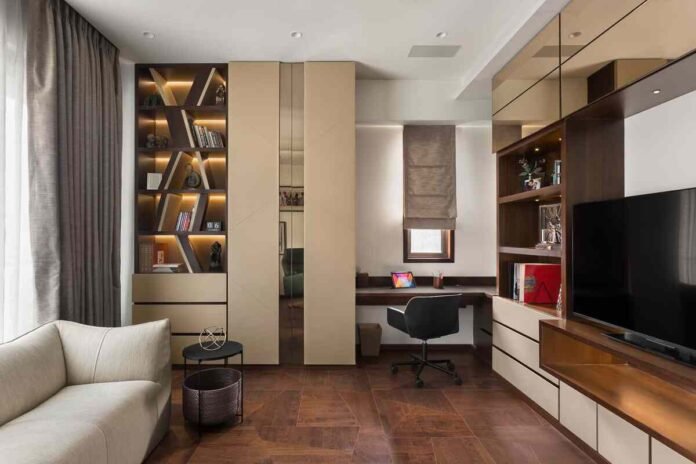If material forms the body of a space, proportion is its soul. Banaji & Associates believes that the emotional resonance of an interior often lies not in its objects, but in its balance. And that balance, when finely tuned, feels less like a formula and more like poetry. In the practice, led by Ar. Jamshed Banaji and Ar. Nirmala Banaji, proportion is not merely a technical decision, it’s a design language, a way to bring stillness, rhythm, and meaning into the built environment. It is how a ceiling height quietly uplifts, how a piece of furniture fits without imposing, how negative space breathes life into the positive.
Over the years, proportions have been used to govern the mood of any space. A room that is too grand can feel cold. One who’s overly compact can feel anxious. But when the dimensions, lines, and sightlines are in dialogue, when the materials align, and the volumes complement, the space begins to settle into itself. It becomes not just visually coherent, but emotionally grounded.
In one of our residential projects, we worked with a palette of natural stone, wood, and light to create a home that was not defined by scale, but by serenity. The double-height areas were softened by floating stairs and suspended chandeliers that respected the verticality while anchoring the space. Furniture was custom-proportioned to the human experience, not to spectacle. Even the bathrooms and powder rooms were detailed with a sculptural precision, where the basin, light, and wall all aligned in a visual and tactile rhythm.
In another project- an immersive retail experience, we used proportion to choreograph how the visitor moved through the space. The central chandelier, carved wooden furniture, velvet-lined displays, and even the width of corridors were all tuned to create a balance between luxury and intimacy. Nothing overwhelmed; everything worked in relation.
Proportion, when understood well, allows materials to shine without noise. Travertine, for instance, gains gravitas when used across wide, uninterrupted surfaces. Brass inlays catch light better when used sparingly, within a controlled rhythm. Textiles and leathers, when scaled correctly, add comfort and tactility without excess.
In essence, proportion is not just about the spatial, it’s about the sensory. It informs how we feel in a room, how we respond to the flow of natural light, and how we intuitively navigate a space. It’s in the spacing of elements, the pacing of visual weight, and the breath between materials.
By Banaji & Associates


